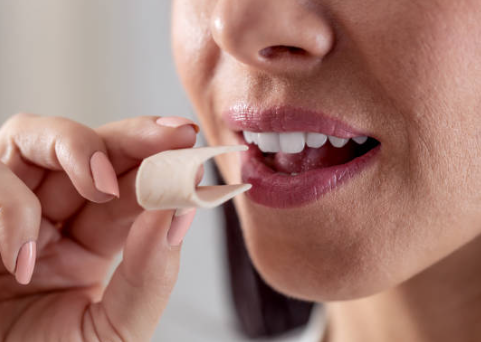Ever catch yourself tallying up all the ways plastic sneaks into your life? Add this one to your mental list: chewing gum. Yeah, that innocent minty chew—turns out, it might be leaking hundreds (if not thousands) of microplastic particles into your spit with every chomp. A new pilot study, still under peer review but already raising eyebrows, suggests just that. Researchers are prepping to showcase their work at the American Chemical Society’s shindig in San Diego, with hopes of dropping the full paper in the Journal of Hazardous Materials Letters later this year.
Dr. Sanjay Mohanty, the lead brain behind the study and an associate professor at UCLA, says they’re not trying to start a panic—yet. “We don’t know for sure if microplastics are harmful,” he explained. “No human trials. But we do know they’re everywhere, and that’s what this project zoomed in on.” So chewing a single piece of gum could be like swallowing glitter… invisible glitter.
So here’s the scoop: microplastics in gum are real, and this study tried to map them out. These plastic bits aren’t just floating in oceans anymore—they’re in our lungs, our placentas, even our brains (yikes). What makes gum extra fascinating—and kind of gross—is that it’s the only “food” where plastic polymers are deliberately added. Everything else, like seafood or bottled drinks, gets contaminated somewhere down the line. But gum? It starts with plastic.
And here’s a twist you didn’t ask for—labels don’t tell you squat. Most gum brands are mum about what exactly is in their gum base. So researchers had no way to pin down where the microplastics in gum originated. Are they baked in during manufacturing? Is it the packaging? No clue.
They chewed on ten types of gum, split evenly between synthetic and “natural” kinds (though even the natural ones, surprise surprise, were full of plastics). For each test, a volunteer chewed gum for four minutes while scientists collected the saliva. Kind of like milking a human cow. Then came mouth rinses, centrifuges, all that sciencey stuff. Some tests stretched to 20 minutes to see if the numbers went up with time (spoiler: they did).
Microscopic analysis showed that 1 gram of gum—roughly a single stick—could release about 100 microplastics. Some went as high as 637. That’s per gram. Multiply that by the number of sticks you chew after lunch every day and… yeah, chew on that.
Even more bizarre? Whether the gum was synthetic or “natural,” it didn’t really matter. Both kinds spat out nearly the same number of plastic particles. And the types found—polyolefins, polyacrylamides, polyethylene terephthalate, polystyrene—are the same stuff used in soda bottles, clothing fibers, and cling wrap. Basically, your gum is a cousin to your yoga pants.
Dr. David Jones, from the University of Portsmouth, chimed in (he wasn’t part of the study, but he had thoughts). “If you rub plastic hard enough—heat it, chew it, drown it in seawater—it sheds microplastics. No mystery there.” He compared it to how we’re all involuntarily snacking on 250,000 plastic particles a year just by living. Delightful, right?
The National Confectioners Association pushed back, saying gum is safe and has been for over a century. They pointed out that all ingredients are FDA-approved. Cool story, but it doesn’t account for microplastics in gum that weren’t even on their radar.
What’s murky? The average particle size was about 82.6 micrometers—paper-thin, basically. But the tools couldn’t even detect particles below 20 micrometers. That means the study might’ve missed an entire microplastic underworld. Which is unsettling. Kind of like seeing one cockroach and wondering how many are under the fridge.
Oh, and some natural gums weirdly had synthetic polymers too. Could be contamination. Could be secret additives. Could be lab error. Nobody knows, because transparency is apparently too much to ask from candy companies.
One last thought: chewing gum doesn’t just litter sidewalks or stick under desks anymore—it might also be a stealthy contributor to our daily plastic intake. Microplastics in gum—tiny, tasteless, and possibly toxic—are another reminder that modern life is basically wrapped in plastic.
So… what now? Spit it out or keep chewing? That’s up to you.
Enjoy this story? Here is another.

